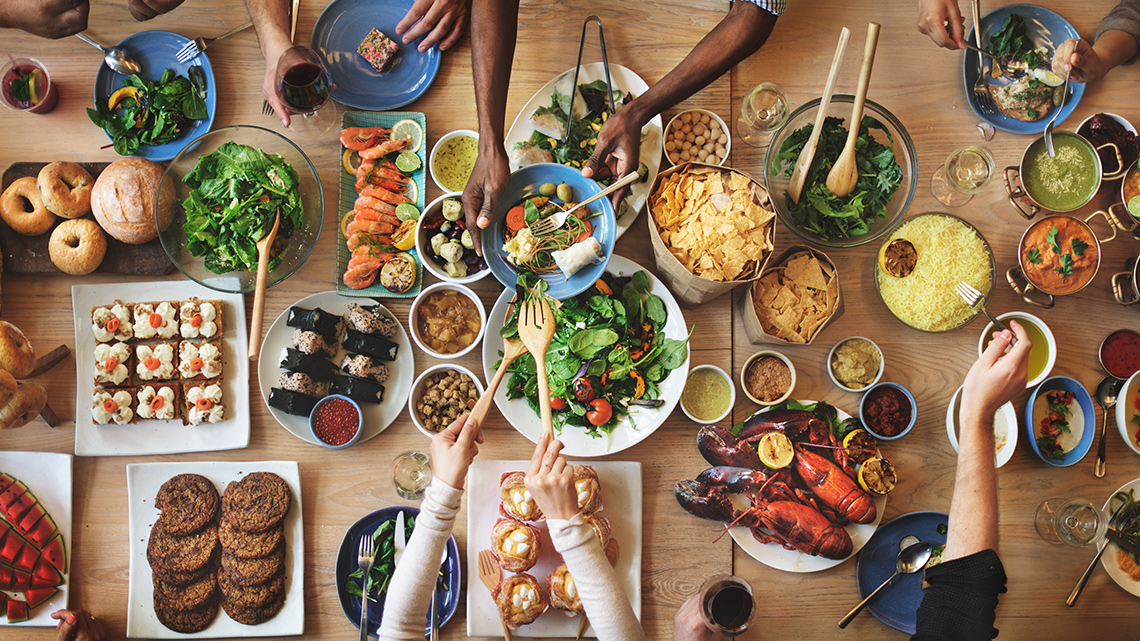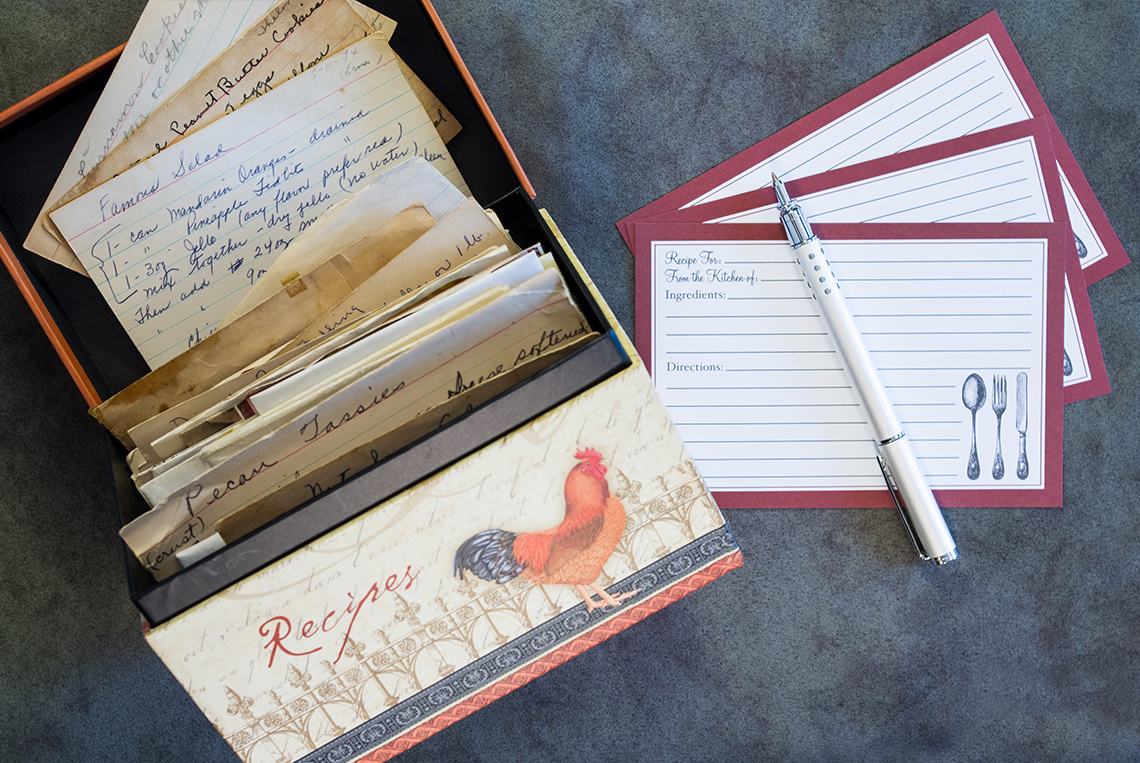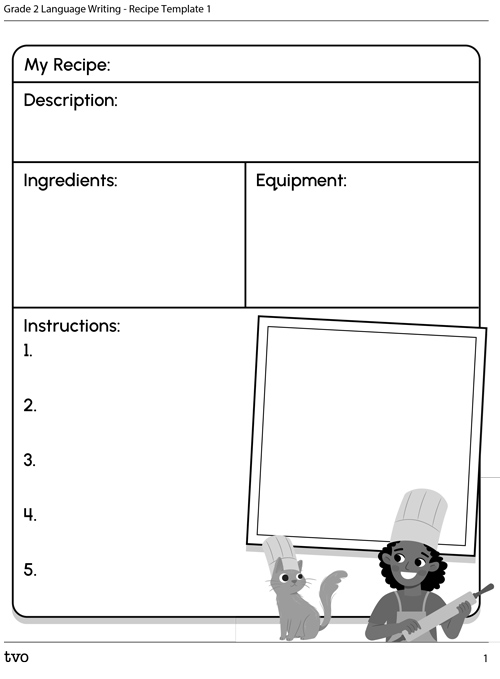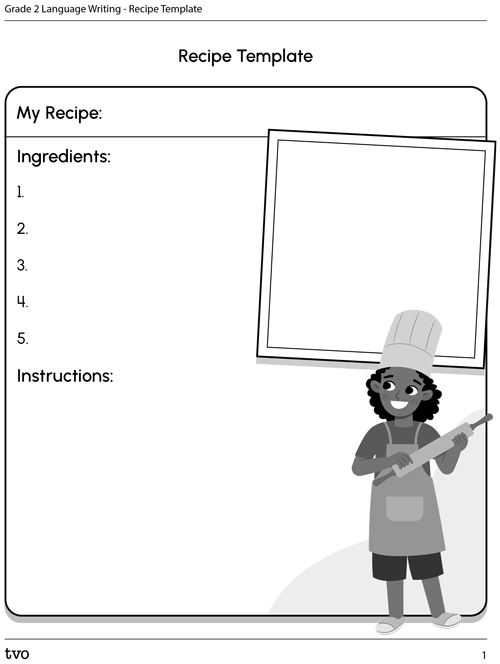Minds On
Food we make at home

Many people prepare delicious foods that come from their family culture. Think about a food that is made in your home that is your favourite to eat. Does it come from a special recipe? Does the person who makes it need a recipe or do they make it from memory? Why is it your favourite?
If possible, take a few moments to share your answers with a partner or someone at your home.
Action
Choosing a recipe
Choose a recipe that you would like to share. It can be one that is already made in your home, or one that you would like to research on the internet or using a book or magazine. Some easy recipes are:
- soup
- grilled cheese
- pizza
- pancakes

Parts of a recipe
A recipe has 3 main parts.
Recipes can also include the usual time it takes and the number of servings (the number of people this amount of food will serve when following the recipe).
Use one of the Recipe templates in your notebook or use the following fillable and printable document to help you get started.
Recipe title
Let’s start with writing the title of our recipe. Once you have chosen your recipe, include the title on your recipe template.
Ingredients
Some of the ingredients in a recipe can be hard to spell. Do your best to sound out or stretch out the word, or write it then check and correct. Put the ingredients in your recipe onto your recipe template.
Ingredients List
- (Blank)
- (Blank)
- (Blank)
- (Blank)
- (Blank)
- (Blank)
- (Blank)
- (Blank)
- (Blank)
- (Blank)
| Ingredients | |||
|---|---|---|---|
Flour
|
Water |
Oil
|
Cilantro |
Cheese
|
Lettuce |
Sour cream |
Popcorn shoot
|
Student Tips
Spelling resources
Once you’ve written your list, use a spelling resource near you to check your spelling. A spelling resource you might choose to use is:
- Word Wall
- online dictionary
- personal dictionary
- picture dictionary
- high frequency word list
Now we need to list the cooking materials or equipment on our recipe template.
Try to say the equipment word aloud, think about the word in your head, or check and correct by writing it on paper or a whiteboard to help you spell it. If you’re not sure what it’s called, perhaps you could ask a teacher or trusted adult.
Cooking Materials/Equipment List
- (Blank)
- (Blank)
- (Blank)
- (Blank)
- (Blank)
- (Blank)
| Materials/Equipment | |||
|---|---|---|---|
Mixing bowl |
Pitcher |
Spatula |
Rectangular container |
Sifter
|
Cutting board
|
Frying pan |
knife |
Oven |
|||
Student Tips
Spelling tips
Once you’ve written your list, use a spelling resource near you to check your spelling. A spelling resource you might choose to use is:
- Word Wall
- online dictionary
- personal dictionary
- picture dictionary
- high frequency word list
Check your cooking materials list. Some of these items may be on your list:
- mixing bowls
- spatula
- pitcher or jug
- cooking pots or pans
- knife (use only with an adult)
- measuring cups or spoons
Great job!
Instructions
List the instructions on your recipe template in the order that makes the most sense.
Instructions/Directions
- (Blank)
- (Blank)
- (Blank)
- (Blank)
Revising
If possible, work together with a partner to make sure you have the correct order of steps in your instructions.
Next, review your lists to make sure you have all the ingredients, equipment, and recipe instructions. You may need to use your mind map to help you make sure you have the required information in your lists.
Now your recipe template parts should mostly be filled.
This recipe for French toast is complete and ready to share.
Easy French Toast
(Make sure an adult is there to help out)
Ingredient list:
- 4 slices of whole wheat or white bread
- 3 eggs
- 1 cup of milk
- 1 tablespoon butter
- syrup
Equipment list:
- mixing bowl
- fork
- measuring cups
- frying pan or griddle
- spatula or flipper
- serving plate
Instructions/directions:
- Turn on stove top or griddle to medium heat to warm up.
- Crack eggs into mixing bowl.
- Add milk to eggs and combine with a fork.
- Dip each slice of bread, one at a time, into the mixture.
- Place the coated bread onto the frying pan or griddle.
- After 2 minutes turn the bread over using the spatula or flipper – it should be golden brown in colour.
- After 2 more minutes use the spatula or flipper to lift the bread slices onto your serving plates.
- Pour syrup onto warm French toast and enjoy!
Time needed to make: 15 minutes
Serves: 2 People
We are almost done our recipe. Are there any other details we can still add? What are they?
Remember to check your written instructions for correct punctuation using a checklist.
Punctuation Checklist
Capital used:
Periods used:
Commas used:
Publish
Now you are ready to publish your recipe onto a recipe card or using a digital tool.
This is the part where we enlarge and bold the recipe titles and Ingredients, Materials/Equipment, Instruction/Direction headings.
Consolidation
What’s cooking?
Choose one:
- Choose another favourite recipe you love to eat. Share and publish it.
- If possible, research by interviewing a teacher or family member to share a simple recipe and record it. Ask permission to publish it.
Checklist
Use this recipe checklist to look over your work before you publish your recipe onto a recipe card or online.
Recipe Checklist

Spelling
Punctuation
Capital used:
Periods used:
Commas used:
You may wish to keep a copy of the checklist as a reference.
Press the ‘Activity’ button to access the Recipe Checklist.
Reflection
How do you feel about what you have learned in this activity? Which of the next four sentences best matches how you are feeling about your learning? Press the button that is beside this sentence.
I feel...
Now, record your ideas about your feelings using a voice recorder, speech-to-text, or writing tool.
Press ‘Discover More’ to extend your skills.
Discover More
Recipes are shared and documented in writing. For thousands of years, important traditional knowledge, Creation Stories, teachings and stories have been passed on through the Oral Tradition in Indigenous cultures like Anishinaabe/Ojibwe, Mi'kmaq/Micmac, Mohawk.
If possible, ask your teacher to consider inviting a First Nations Elder or Métis Senator to teach and share about the Oral Tradition. Your teacher could contact your Indigenous Community Friendship Centre. Your teacher will make sure that they follow the appropriate protocols when asking and inviting an Indigenous guest speaker, as well as thanking them according to the protocol. The Indigenous Friendship Centre will have more information about the appropriate protocols.

